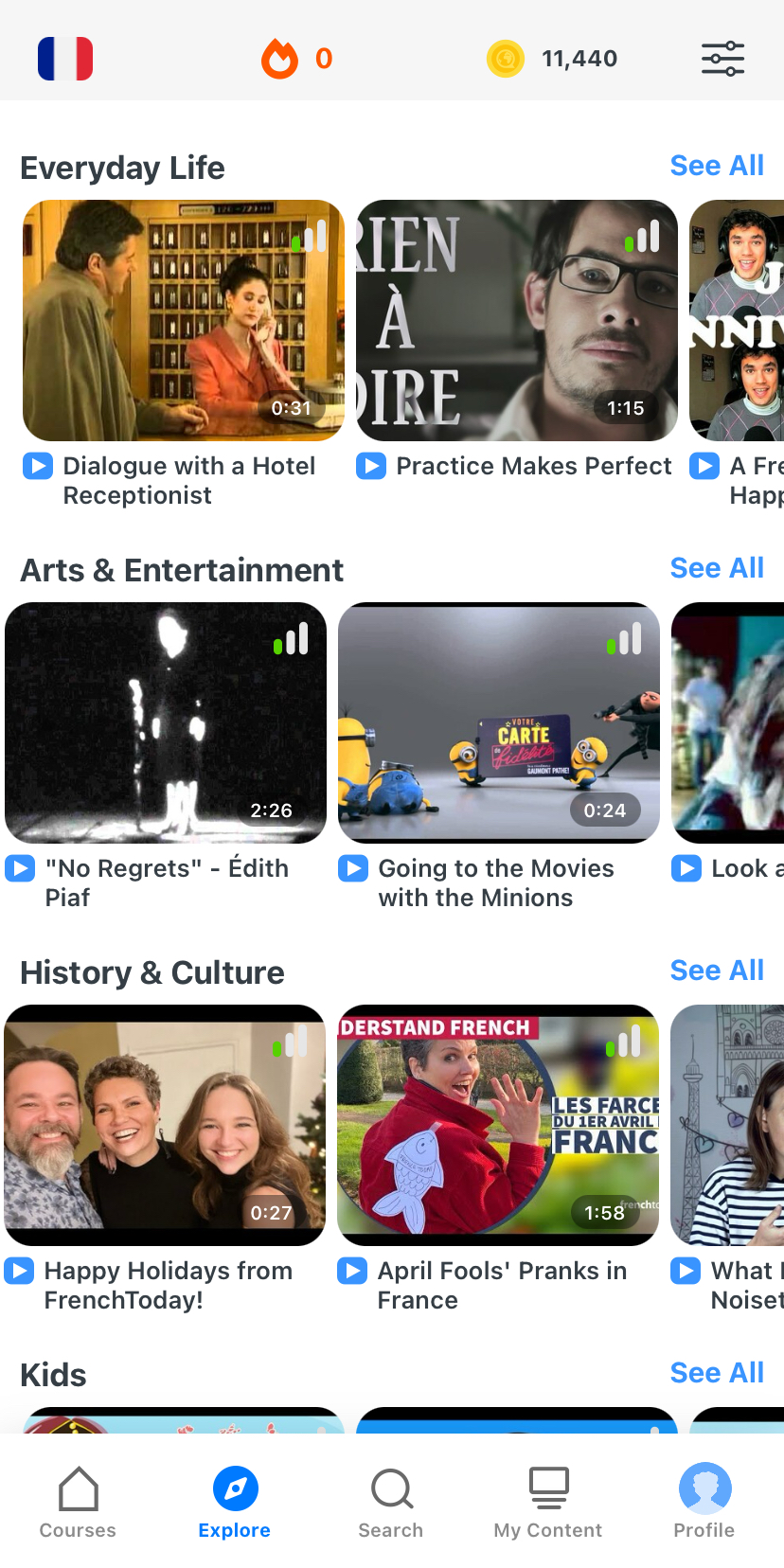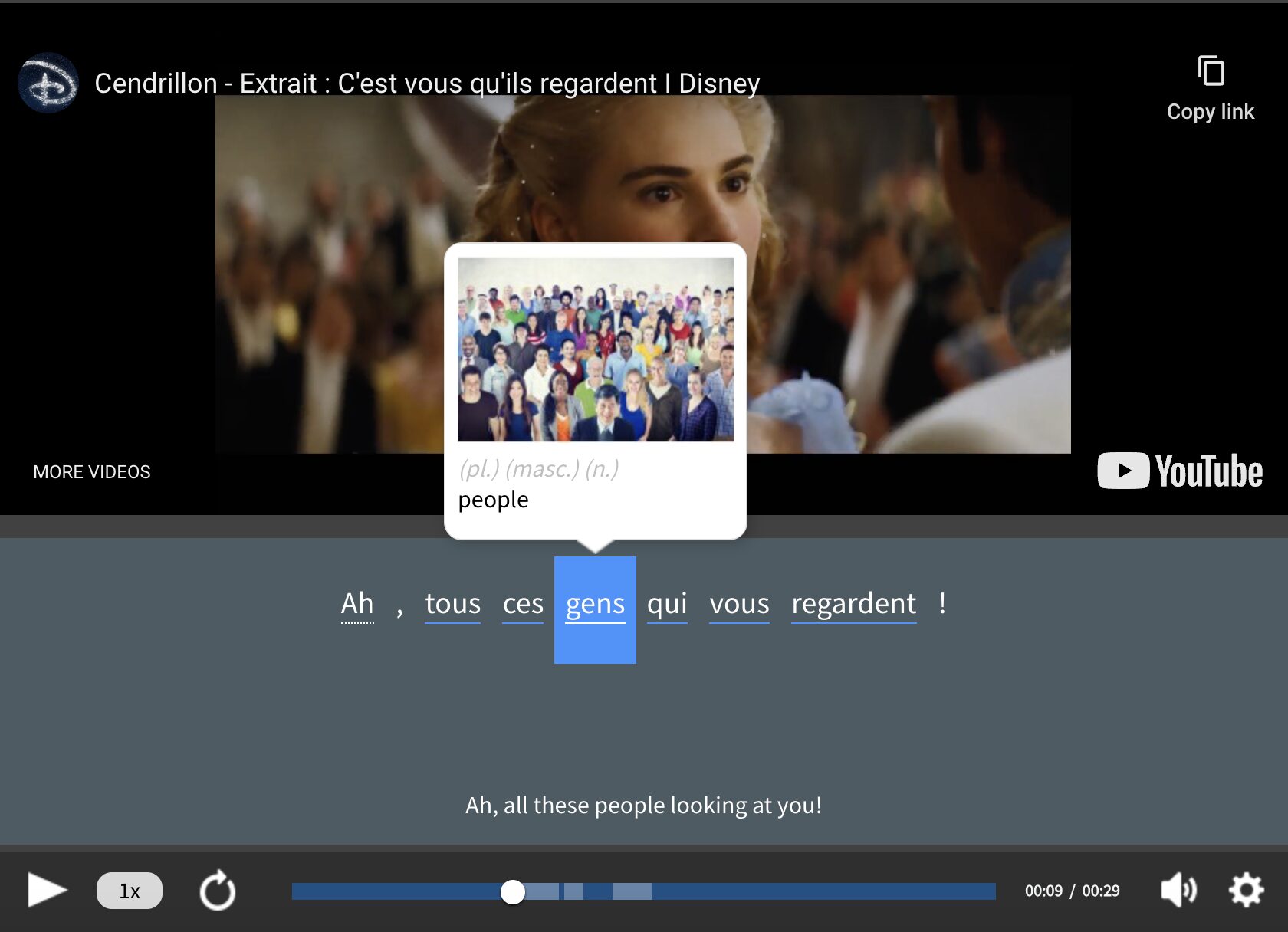The 6-step Guide to Mastering French Phonetics

To speak French without a foreign accent, you’ve got to know French phonetics.
By breaking words down into individual sounds, phonetics can make French much more manageable and soon, speaking French will become second nature.
We’ve put together six foolproof steps for learning French phonetics so you can steadily improve your French pronunciation.
Contents
- 1. Practice daily with a phonetic alphabet
- 2. Focus on French vowels
- 3. Source out the silent letters
- 4. Note the differences in French consonants
- 5. Focus on the boundaries between spoken words
- 6. Learn how to stress your words correctly
- Why are phonetics important for speaking French?
- And One More Thing...
Download: This blog post is available as a convenient and portable PDF that you can take anywhere. Click here to get a copy. (Download)
1. Practice daily with a phonetic alphabet
The best way to master French phonetics is with the use of a really great French phonetic dictionary. Word Reference’s online phonetic dictionary is a great tool to use if you’re struggling with new words. You have access to both written and audio versions of the words, including phonetic spellings.
Note that the International Phonetic Alphabet (IPA) is something you will see on most learner websites. Presenting letters between backslash markings ( / / ), this phonetic alphabet shows how to pronounce words.
I do recommend taking the time to learn the phonetic alphabet. Once you’ve learned the IPA symbols in French, you will have no trouble blind-reading new words in French phonetic dictionaries.
Choose one IPA letter at a time. You can learn one sound a day, or even spend a full week focusing on words with the same vowel sound.
In addition, regular phonetic exercises will keep you on track.
2. Focus on French vowels
How French vowels are pronounced can vary a lot depending on where they’re used in a word, so taking time out to focus on vowels will serve you well. Typically, vowels are pronounced as pure vowel sounds, semi-vowel sounds or nasal sounds.
Pure French Vowels
Pure vowels tend to appear on their own in words, and are pronounced in the same way. I recommend using IE Languages‘ in-depth page dedicated to vowel sounds, which includes a number of audio clips to help you distinguish between them.
| Pure Vowel Sounds | Example Words |
|---|---|
| /a/ | chat
(cat) pardon (pardon) rare (rare) |
| /e/ | année
(year) été (summer) lever (to lift) |
| /ɛ/ | tête
(head) mère (mother) fête (party) |
| /i/ | six
(six) mirage (mirage) filles (girls) |
| /o/ | château
(castle) côte (coast) chaud (hot) |
| /ɔ/ | soleil
(sun) tonique (lively) sortir (to go out) |
| /u/ | loup
(wolf) fou (crazy) bouche (wheel) |
| /y/ | tu
(you) rue (street) lune (moon) |
| /ø/ | deux
(two) pœr (fear) heureux (happy) |
| /œ/ | heure
(hour) œuvre (work) nœuf (nine) |
| /ə/ | le
(the) de (of, from) que (that, what) |
French Semi-Vowels
Semi-vowels have a sound which might be somewhat distorted from the spelling, but they are fairly easy to get your head around, and are based around the /w/ and /j/ sounds.
| Semi-Vowel Sounds | Example Words |
|---|---|
| /j/ | yeux
(eyes) yaourt (yogurt) travail (work) |
| /w/ | oui
(yes) voix (voice) louer (to rent) |
| /ɥ/ | huile
(oil) huit (eight) suis (am/is/are) |
French Nasal Vowels
Nasal vowel sounds can be harder to comprehend when spoken. The phrase un bon vin blanc (a good white wine) is typically used as an example of French nasal vowels, which are those that are pronounced at the back of the throat and nose:
| Nasal Sounds | Example Words |
|---|---|
| /ɑ̃/ | avant
(before) danse (dance) champion (champion) |
| /ɛ̃/ | vin
(wine) main (hand) chien (dog) |
| /ɔ̃/ | chanson
(song) montagne (mountain) rompre (to break) |
| /œ̃/ | lundi
(Monday) parfum (perfume) opportun (opportunistic) |
As with all learning exercises, it pays to take your time with French vowels, focusing on one type at a time. The pure vowel sounds are a good place to start, as they appear in many common French words. Use the IE Language page and the table above to begin getting familiar with these sounds. Listen to the recorded pronunciations and try repeating afterward.
After learning the sounds themselves, practice saying words in which the specific sounds appear. Start with one vowel sound and repeat it several times, and then say the example words above. Try adding a new word and/or sound into your learning routine each day to gradually learn the vowel sounds.
FluentU takes authentic videos—like music videos, movie trailers, news and inspiring talks—and turns them into personalized language learning lessons.
You can try FluentU for free for 2 weeks. Check out the website or download the iOS app or Android app.
P.S. Click here to take advantage of our current sale! (Expires at the end of this month.)
3. Source out the silent letters
French does have some silent letters, so once you’re feeling good about your vowels, continue on to these quiet critters. While “h” is probably the most popular of the silent letters, there are others that pop up from time to time.
- The letter “h.” If a word begins with an “h,” normally it’s silent, and the following vowel is pronounced as the first letter. For example, words such as heure (hour), homme (man) and haut (high) all begin with a silent “h.”
- Final consonants. In addition, final consonants in words are often not pronounced. The word blanc (white), for example, is pronounced with a soft ending. When “e” appears at the end of a word, it’s also rarely pronounced. If an “e” is placed after a consonant of a feminine word, the final consonant is pronounced with the “e” remaining silent.
Using petit (small) in its masculine form, for example, you would not pronounce the final “t.” But if you were describing a feminine object as being petite (small), you would complete the word with a /t/ sound.
Using a gender guide in French can help you to focus on the differences in pronunciation and on hard and soft endings. While the website Grammarist can help you to recognize when a noun is masculine or feminine, Audio French.com gives you direct access to a word’s pronunciation, so that you can hear it before you speak it.
And if you’re ever in doubt about how to pronounce a word, the French audio dictionary on About.com or Forvo will have you covered. There are also plenty of pronunciation apps that can help you study 10-15 new words each week so you can make steady progress.
4. Note the differences in French consonants
After vowels and silent letters, next up would be the consonant sounds in French:
| Consonant Sounds | Example Words |
|---|---|
| /p/ | poisson
(fish) accepter (to learn) portable (cellphone) |
| /b/ | bonjour
(hello) beau (beautiful) bibliothèque (library) |
| /t/ | table
(table) matin (morning) temps (time) |
| /d/ | devoir
(to have to) idée (idea) dimanche (Sunday) |
| /k/ | café
(coffee) qui (who) croissant (croissant) |
| /g/ | garçon
(boy) magasin (store) gare (train station) |
| /f/ | français
(French) professeur (teacher) film (film) |
| /v/ | voiture
(car) avoir (to have) novembre (November) |
| /s/ | salle
(room) savoir (to know) costume (suit) |
| /z/ | zéro
(zero) raisin (grape) chose (thing) |
| /ʃ/ | chien
(dog) chocolat (chocolate) chemise (shirt) |
| /ʒ/ | jeune
(young) géant (giant) voyage (travel) |
| /m/ | maison
(house) fomage (cheese) programme (program) |
| /n/ | nuit
(night) banane (banana) penser (to think) |
| /ɲ/ | montagne
(mountain) agneau (lamb) compagnie (company) |
| /ŋ/ | ping-pong
(ping-pong) camping (camping) anglais (English) |
| /l/ | livre
(book) mille (thousand) général (general) |
| /ʁ/ | rouge
(red) fourchette (fork) argent (money) |
Many consonants in French have consistent sounds, but some work differently from what you might be used to in English. It’s not surprising that pronunciation mistakes are pretty common in French:
The French “r” gets the most attention as a difficult letter for English speakers to pronounce. Spoken at the back of the throat, it has a much more guttural sound than in English, and is always pronounced as a strong sound. Merci (thank you), for example, has the “r” spoken at the back of the throat.
As with many rules, there are exceptions that can be picked up with practice, so a great pronunciation guide will really serve you well. The book “French Phonetics” draws attention to the important differences between individual words.
How a letter is pronounced when it falls at the start, middle or end of a word can differ massively. As in the other steps, choose a new type of consonant every few weeks and focus on its different possible pronunciations. Pronouncing a group of 10 words that all feature the same consonant sound can be a great warm-up.
5. Focus on the boundaries between spoken words
Many French words are often run together and pronounced as a continuous phrase. For the most part, words ending in a consonant that are followed by a word starting with a vowel are run together; the final consonant of the first word is sounded at the start of the second word.
Mon amour (my love), for example, is pronounced like mo n’amour. In French, final consonants are not pronounced unless there is a vowel directly after it. In cases like this, the vowel of the following word triggers the pronunciation of the final consonant.
This clear intro to liaisons on Lawless French is a good place to start practicing French liaisons. About.com’s French Language section also has a nice lesson on liaisons.
Begin with the required liaisons and then learn when liaisons are forbidden.
6. Learn how to stress your words correctly
Unlike in English, French usually stresses the final syllable in a word. WordReference.com can be particularly useful site for pronunciation information.
The University of Texas’s Department of French and Italian has an awesome site with everything you could need to know about stresses in French words, including learning exercises. Listen to the difference between English and French stresses, and then try it for yourself.
French phonetics create the momentum that will steadily propel you toward fluency. Slowly approach each sound one at a time to really sink into the French language!
Why are phonetics important for speaking French?
- They help you pronounce words in French. In the early stages of French conversation, phonetics are possibly the most important element because they give you a step-by-step guide to speaking in French. The differences between a number of French words might be hard to distinguish now, particularly in vowel-heavy words, but focusing on phonetics will make even small pronunciation changes clear.
- They mark important language differences. New speakers often make embarrassing mistakes when they speak in French because they haven’t learned how to set apart similar-sounding words.
- They will boost your confidence in conversation. Being able to conduct an accurate conversation with a native in French will do wonders for your confidence. And communicating in this way will be possible once you know your phonetics.
Breaking words down into bite-sized chunks will help you hugely down the line. By taking your time to learn these basics, you will later improve your French at a much more rapid pace.
Download: This blog post is available as a convenient and portable PDF that you can take anywhere. Click here to get a copy. (Download)
And One More Thing...
If you like learning French at your own pace and from the comfort of your device, I have to tell you about FluentU.
FluentU makes it easier (and way more fun) to learn French by making real content like movies and series accessible to learners. You can check out FluentU's curated video library, or bring our learning tools directly to Netflix or YouTube with the FluentU Chrome extension.
One of the features I find most helpful is the interactive captions—you can tap on any word to see its meaning, an image, pronunciation, and other examples from different contexts. It’s a great way to pick up French vocab without having to pause and look things up separately.
FluentU also helps reinforce what you’ve learned with personalized quizzes. You can swipe through extra examples and complete engaging exercises that adapt to your progress. You'll get extra practice with the words you find more challenging and even be reminded you when it’s time to review!
You can use FluentU on your computer, tablet, or phone with our app for Apple or Android devices. Click here to take advantage of our current sale! (Expires at the end of this month.)












